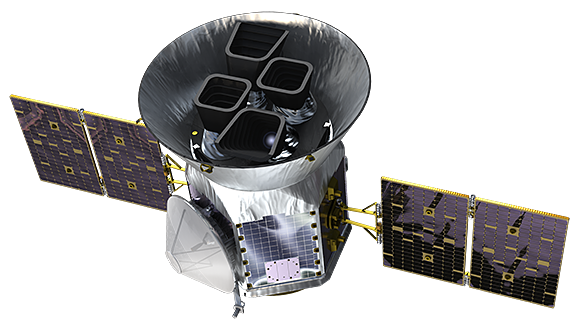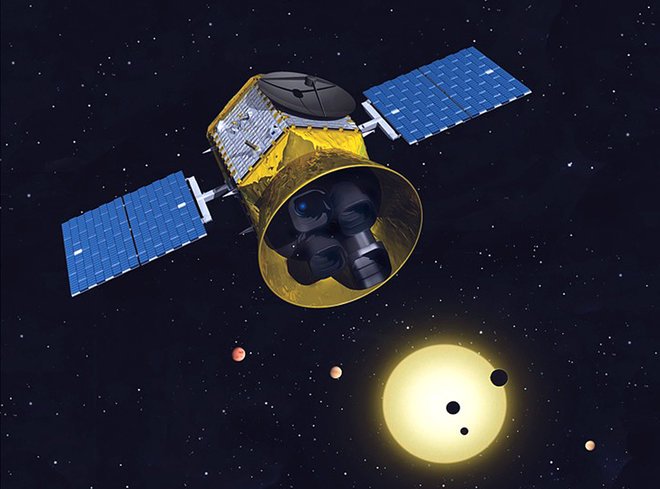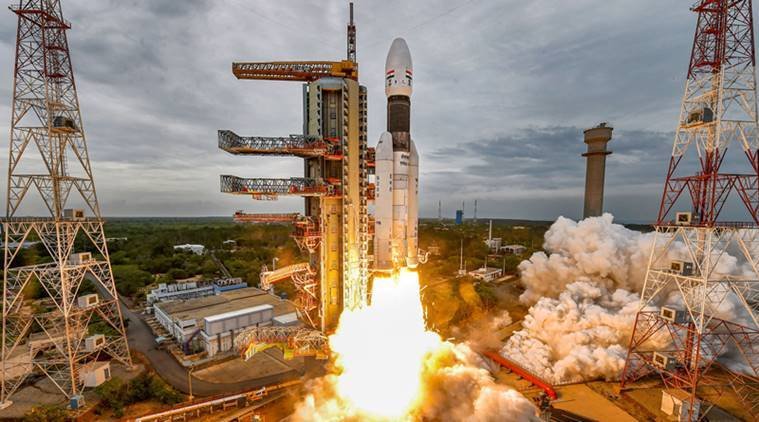TESS(Transiting Exoplanet Survey Satellite)
Nasa Has just launched TESS satellite with SpaceX. TESS satellite is going to search for exoplanets using transit method in an area 400 times larger than that covered by the Kepler mission. Kepler was launched in 2009 to discover planets like earth, orbiting other stars. It was launched at Cape Canaveral Air Force Station Space Launch Complex 40 launch center using Falcon 9.
NASA other projects for searching exoplanets WFIRST, Kepler, LBTI, NN-EXPLORE, K2, Spitzer Space Telescope, Hubble Space Telescope, and they will be launching James Webb telescope in 2020. Read about all the projects here.
SpaceX falcon 9 rockets was used to take the TESS satellite into the orbit, and it is the 24th successful landing of Falcon 9 Stage One back to earth. Falcon 9 was built with the intention of reusable rockets.
KEPLER
Kepler, which has discovered more than 4,500 potential planets and confirmed exoplanets, launched in 2009. After mechanical failure in 2013, it entered a new phase of campaigns to survey other areas of the sky for exoplanets, called the K2 mission. This enabled researchers to discover even more exoplanets, understand the evolution of stars and gain insight about supernova and black holes.
Soon, Kepler’s mission will end, and it will be abandoned in space, orbiting the sun and never getting any closer to Earth than the moon. As Kepler is running out of fuel NASA has launched TESS.
What is the Mission of TESS
 To find habitable planets around the stars which we see in the sky. TESS will be discovering thousands of exoplanets which orbit around the brightest star in the sky. It has 2 year period in which it will be monitoring over 2 lakhs stars and covering about 85 percent of the sky. It will be looking for temporary drops of brightness caused by planets transit. This first-ever spaceborne all-sky transit survey will identify planets ranging from Earth-sized to gas giants, around a wide range of stellar types and orbital distances.
To find habitable planets around the stars which we see in the sky. TESS will be discovering thousands of exoplanets which orbit around the brightest star in the sky. It has 2 year period in which it will be monitoring over 2 lakhs stars and covering about 85 percent of the sky. It will be looking for temporary drops of brightness caused by planets transit. This first-ever spaceborne all-sky transit survey will identify planets ranging from Earth-sized to gas giants, around a wide range of stellar types and orbital distances.
TESS will orbit in a highly elliptical orbit which will help to maximize the satellites image. It will complete a single orbit in 13.7-day, that no spacecraft has ever occupied before.
The orbit will take TESS farthest to 373,000 KM and closest to 108,000 KM. The satellite will transmit the data quickly and efficiently when closest to the earth.
But TESS won’t get there for a while. After a number of engine firings and one dramatic maneuver — a close flyby of the moon on May 17 — TESS will arrive in its final orbit in mid-June, if all goes according to plan. The science campaign will start shortly thereafter.
The TESS mission is capped at $200 million, not including launch costs (which added another $87 million, NASA officials said).
Lets hope this satellite will give us some earth like planets and data to search for life in other planets.
You can also listen to the post if are too tired to read. This is just an experiment so please comment whether you like it or not, and should I continue in other post as well.





Pingback: Upcoming Space mission from 2018 - 2030 – ReviewStories